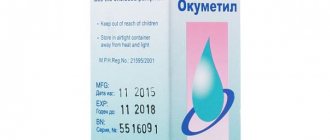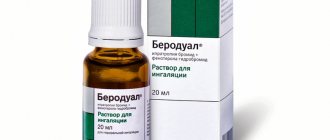Rhinitis, or inflammation of the nasal mucosa with the development of swelling and difficulty breathing, is one of the most common symptoms of ARVI. It can also be called one of the most unpleasant: a stuffy nose runs, itches, and interferes with normal breathing, talking and sleeping. It is not surprising that people with colds turn to pharmacies for help. This means that the pharmacist needs to be prepared to answer popular questions about the treatment of the common cold. In this material, we tried to highlight the main nuances of using nasal rinses, essential oils and decongestants.
Is rinsing the nose with saline solutions effective if it is blocked due to rhinitis?
Yes, regular irrigation of the nasal cavity during inflammation of the mucous membrane is recognized as one of the necessary measures in the treatment of various types of rhinitis. The use of a saline solution helps restore free breathing and normalize the functioning of the nasal epithelium, which is hampered by accumulating mucus. Along with it, when washing, pathogenic microorganisms (and allergens, if we are talking about allergic rhinitis) are removed from the inflammation zone1.
For the same reason, irrigation of the nasal cavity is also recommended as a prevention of viral infections, which are usually accompanied by rhinitis. If you regularly cleanse the mucous membrane of viruses that settle on it, they will have less chance of entering the body - it takes pathogens several hours to do this2. At the same time, it is worth reminding pharmacy visitors that in this case there is no question of treating viral diseases themselves - rinsing is effective only in the fight against a runny nose as a symptom.
Features of nasal instillation for sinusitis
Sinusitis occurs due to the development of inflammatory processes in the mucous membrane of the maxillary sinuses. These cavities are connected to the nasal passages, so they are also treated with drops.
The technique of nasal instillation for this disease is dictated by anatomical features. Drops should be administered in a lying position with the head slightly tilted back. The head must be turned slightly and the product must be injected into the nostril, which is closer to the surface where the patient lies.
As in other cases, before injecting drops into the nose, it is necessary to clear the nasal cavity of mucus, but this must be done without much effort so as not to harm the mucous membrane.
To rinse your nose, it is not necessary to buy pharmacy aerosols - can the solution be prepared at home?
This is true if you do not take into account issues of comfort and safety. Irrigation can be done with salted water or ordinary saline solution. But the use of aerosols is simply more convenient: the stream enters the nose under pressure and irrigates a large area of the mucous membrane. The second nuance is that if you prepare the solution yourself, you can make a mistake with the concentration and get a burn to the nasal cavity, but in pharmaceutical preparations everything is thoroughly verified. They are also completely sterile.
All saline solutions are the same, so there is no need to consult a pharmacist when purchasing them.
As we have already said, saline solutions from the pharmacy are safe when used correctly, but the buyer may still need the help of a front desk employee. There is a difference between these drugs, and it lies in the concentration of salt. Isotonic (physiological) solutions are identical in this regard to natural body fluids.
But in hypertonic solutions the salt content is increased. Both are used to irrigate the nose. But isotonics are better suited for hygienic purposes and preparing the mucous membrane for the use of other drugs. But hypertensive drugs were created precisely to relieve the symptoms of rhinitis. In pharmacies you can buy sprays and powders for diluting both types of drugs, so it would be useful to find out exactly why the buyer needs the drug.
Treating your nose correctly!
Each of us has encountered a runny nose throughout our lives... For treatment, specialists often prescribe drops and sprays into the nose... It would seem that it might be easier to put drops on the nose of yourself, a child, or a relative? But nevertheless, this simple procedure has nuances and features . We will talk about them. When a doctor prescribes several medications at the same time, the following order must be observed: 1. Relieve swelling. 2. Rinse your nose. 3. Instill medications (antibiotics, mucolytics, immunomodulators). Vasoconstrictor medications will help relieve swelling... But you need to remember that taking it for more than 5 days (and some for more than 3) leads to addiction and the nose will refuse to breathe on its own. Uncontrolled use of this group of drugs thins the mucous membrane, which leads to a complication - atrophic rhinitis due to long-term narrowed blood vessels and lack of oxygen. This group of drugs should also be used with caution by people suffering from hypertension, there is a danger of increased pressure due to the vasoconstrictor effect.. Algorithm The medication is taken as follows: you need to stand up and tilt your head forward. Inject the required amount of the drug into the nose and massage the wing of the nose. Then repeat with the other half of the nose. Nasal rinsing is carried out with saline solutions purchased at the pharmacy. You can rinse your nose with regular saline solution. These medications help moisturize the mucous membrane and remove mucous membranes containing pathogenic bacteria. It can be used daily as a prophylaxis against influenza and ARVI, as well as for hygienic purposes. As a rule, manufacturers in the instructions describe in detail the method of using the drug for both adults and children. The main features are that most of these formulations are administered into the nose at an angle. The head must be tilted down and slightly to the left, then inject the required amount of the drug into the right nostril (that is, the nostril that is on top). Then repeat with the other half of the nose. If you need to rinse your nose, the medicine is injected under pressure and should flow out of the left nostril. Antiviral agents. Before using them, it is better to clean your nose with saline solution, this will improve the effect of the treatment. Next, you need to take a horizontal position and tilt your head back strongly. Inject the medicine into the nostril and massage. Repeat with the other nostril. Antiviral agents and immunomodulators do not need to be taken out. If the drug gets into the throat there will be no harm, but on the contrary, an additional antiviral effect will occur. When prescribing antibiotics, the nasal passages must be rinsed!!! Since these drugs are prescribed, as a rule, for viscous and thick mucus... Drops with antibiotics need to be instilled (injected) for at least 5-7 days. Children under a certain age should not use sprays. Therefore, it is important to read the instructions to see if there are any contraindications based on age. To correctly introduce the drug into the nasal sinuses, the baby must be laid on his back, tilt his head back and inject the drugs into each nostril. Some drugs are administered at an angle and while inhaling. This is indicated in the instructions. If you follow these simple rules, then recovery will come sooner and your nose will thank you with its healthy, free breathing. Our center’s pharmacy is also always ready to help you.
THERE ARE CONTRAINDICATIONS - YOU MUST CONSULT A DOCTOR
You can make an appointment by phone, at the medical center reception and on the website
They say that rinsing the nose with saline solutions can provoke otitis media?
There is indeed a risk of the solution getting into the middle ear, but if everything is done correctly, it is minimal. It is strictly forbidden to rinse the nose (without using a special device - an aspirator) only for children under 5 years of age. The reason is the immaturity of the auditory tube. In adults, this organ is usually closed and opens only when swallowing, speaking, or yawning. But in children, the auditory tube is open all the time, so fluid and mucus washed away easily get there.
Theoretically, this could happen to an adult, but the chances of this are not so great. In addition, water entering the middle ear does not always lead to otitis media. Everything can be limited to discomfort due to the pressure drop caused by foreign fluid. It’s another matter if pathogenic microflora penetrates into the Eustachian tube - there is a really high risk of developing inflammation.
To prevent this from happening, just follow a few recommendations:
- do not press too hard on the cylinder so that the pressure of the liquid is not too powerful;
- do not rinse your nose when it is very blocked - first you need to instill a vasoconstrictor and clear the cavity of excess secretion;
- do not go outside immediately after washing;
- do not use saline solutions if you have diagnosed otitis media or damage to the eardrum;
- while rinsing your nose, lean forward at a right angle;
- It is correct to blow your nose after the procedure: only with one nostril and with your mouth slightly open.
Following these tips makes nasal irrigation a safe enough procedure to perform at home.
When can anticongestants—local vasoconstrictors—be used to treat a runny nose?
Most often, decongestants are used in the treatment of acute inflammation of the nasal mucosa against the background of acute respiratory viral infections, as well as allergic rhinitis. Most anticongestants in Russia are sold without a prescription, so these drugs are very popular among citizens, including as part of self-medication. They promote temporary constriction of blood vessels in the nasal mucosa, which is why symptoms of inflammation disappear in patients and airway patency is restored.
Indications for their use are not only rhinitis, but also a number of other diseases of the ENT organs: sinusitis, laryngitis, eustachitis, nosebleeds. In cases where a person does not require immediate medical attention, a pharmacist may recommend over-the-counter decongestants as part of the concept of responsible self-medication. But if the visitor’s complaints prompt the pharmacist that his rhinitis occurs with complications, it is still better to refer him to a doctor. Examples of such complaints include high fever or sharp pain in the area of the ENT organs.
Let's go to the pharmacy
The best way to find out which drops are right for you is to consult a doctor. The fact is that sometimes even the use of seemingly harmless vasoconstrictor drops can cause harm. This can happen, for example, in the case of vasomotor rhinitis - the so-called vascular rhinitis, which occurs, among other things, due to excessive use of vasoconstrictors. The situation is exactly the same with drops containing antibiotics - they also cannot be prescribed to yourself. An incorrectly selected drug can lead to bacteria becoming resistant to the antibiotic and the infection becoming chronic.
But even if we are simply talking about alleviating the symptoms of a common cold with the help of vasoconstrictor drops, their choice should be carefully considered and a number of nuances taken into account.
Active substance . Typically, vasoconstrictor drops are made based on xylometazoline or oxymetazoline. Both substances have a similar effect - they increase the concentration of adrenaline in the nasal turbinates. In response to the release of adrenaline, the nasal vessels begin to narrow and congestion disappears. In principle, there is no big difference between oxymetazoline and xylometazoline. However, it happens that a person has an allergic reaction to one of these components, then the drug should be changed. But no matter which of the drugs in this group you choose, keep in mind: vasoconstrictor drops cannot be used for more than 7 days (ideally 2-3 days). The fact is that with prolonged use of such drops, the body stops producing its own adrenaline, which means the nasal vessels lose the ability to narrow on their own. As a result, the drops provide relief only for a few minutes, after which the nose becomes densely stuffy again. As a result, a person ends up in a vicious circle - the more often he uses the drops, the worse his nose can breathe, which means that an increasingly larger dose of medication is required.
Article on the topic
Death from a runny nose.
What dangerous complications are fraught with ENT diseases? Duration of action of the drug .
There are remedies that can make breathing easier for 12 hours, while others relieve a runny nose for only 2–3 hours. It would seem that the longer the drops act, the better. However, it is not. The higher the concentration of adrenaline in the drug (the duration of the effect of the drops depends on this), the faster the nasal mucosa loses its tone and the sooner dependence on the drops occurs. Additional components . It would be good if the vasoconstrictor drops contained hyaluronic acid or other substances to soften the nasal mucosa.
Patient's age . For adults, drops with a concentration of oxymetazoline or xylometazoline 0.1% are suitable. Children - 0.05% solutions. A 0.001% solution is suitable for relieving nasal congestion in infants. However, to reduce the risk of dependence on drops, even adults should use 0.05% drops.
Release form . Vasoconstrictors are usually available in two forms - drops or sprays. The spray is good if congestion is present in the anterior sections of the nose. Drops are suitable if there is discomfort (stuffiness or sensation of a foreign body) in the depths of the nasopharynx.
Important!
If you notice that nasal congestion persists after using vasoconstrictor drops for a long time, try to gradually stop using them. Switch to children's drops, reduce the dose of medications daily (reduce the number of "spritzes" by at least one per day), listen to your feelings (is breathing really so difficult that it is impossible to do without drops) and use medications only when it is for real need to. It’s better to consult a doctor, otherwise it will not be easy to return the nasal mucosa to its normal state.
If decongestants are sold over the counter, are they safe?
If the instructions are followed exactly, the risks of taking decongestants in adults are low. However, you should not discount them. The range of side effects of drugs in this group is quite wide. The most harmless of them are dryness and burning in the nasal cavity.
Other side effects include:
- ciliotoxicity - slowing down the beating of the cilia of the ciliated epithelium of the mucous membrane;
- "rebound" syndrome - deterioration of the patient's condition after discontinuation of the drug or addiction to it;
- development of medicinal or atrophic rhinitis;
- systemic adrenergic effect.
In addition, patients should be warned about the risk of developing rhinitis medicamentosa if the drops are used for more than 7 days (according to the instructions for use). Their long-term use provokes disturbances in the autonomic regulation of blood vessels.
Systemic adrenergic effect (tachycardia, high blood pressure, hyperexcitability) is another undesirable consequence of the use of these drugs. It can develop both against the background of an overdose and with the correct use of anticongestants.
Moscow ENT doctors explained the harm of nasal drops
Doctors of the Research Clinical Institute of Otorhinolaryngology named after. L.I. The Sverzhevsky Department of Health of Moscow told why you can’t constantly use vasoconstrictor drugs for a runny nose.
– As a result of long-term use of vasoconstrictor drugs, drug-induced rhinitis occurs - a chronic inflammatory disease of the nasal mucosa. The danger is that as they are used, the sensitivity of the mucous membrane to them decreases and then disappears completely. At the same time, the mucous membrane itself undergoes changes that lead to a feeling of nasal congestion and impaired nasal breathing. This creates a “vicious circle” - when more and more drops are needed each time to relieve nasal congestion, and the more drug is used, the more the mucous membrane suffers, which in turn leads to even greater breathing problems, notes Anna Tovmasyan, doctor. otorhinolaryngologist NIKIO named after. L.I. Sverzhevsky.
The period of use of vasoconstrictor drops should not exceed 5-7 days. During this time, you can cure colds and get rid of a runny nose. If congestion does not go away, you need to consult an ENT doctor. In addition to difficulty in nasal breathing, symptoms of medicinal rhinitis are: headache, impaired sense of smell, sleep disturbance, irritability, increased blood pressure, increased heart rate, and tachycardia. Long-term use of vasoconstrictor drops can lead to irreversible changes in the inferior turbinates, and in this case, only surgical treatment will help restore nasal breathing.
“People often turn in when the situation becomes critical and neglected. At the same time, they cannot sleep or leave the house without a bottle of drops or spray, using them every hour. If you notice a drug dependence on vasoconstrictor drops, then first of all you should try to stop using the drops yourself and consult an otolaryngologist, added Anna Tovmasyan.
Experts note that there is no risk of addiction when using saline solutions as part of therapy. For example, in an isotonic solution, the salt concentration is close to the concentration in body fluids, so it helps to normalize the ionic balance of the nasal mucosa, the violation of which is accompanied by its swelling. A hypertonic saline solution contains a higher concentration of salt, which promotes intense movement of water towards a higher ion concentration, thus providing a decongestant effect. Acting as an irritant to the nasal mucosa, hypertonic saline stimulates glandular secretion without changing vascular permeability. All this applies to sea water.
Doctors emphasize that it is strictly forbidden to self-medicate and it is better to consult an otolaryngologist who will prescribe an appropriate treatment regimen.
What should you consider when choosing anticongestants for children?
There are many important nuances in treating children with decongestants. Basically, they are due to the fact that in young patients, due to physiology, the risk of side effects is much higher.
Due to their high ciliotoxicity, drugs such as naphazoline and tetrizoline are almost never used in pediatric practice. Therefore, in this case, it is better to recommend imidazoline derivatives (oxymetazoline, xylometazoline, tetrizoline, indanazoline) and benzenemethanol (phenylephrine) - they are the ones that enjoy great confidence among pediatricians3.
In addition, in very young children, the use of decongestants can provoke a decrease in the flow of sympathetic impulses in the vasomotor center of the brain. This is manifested by lethargy, drowsiness, confusion, bradycardia, drop in blood pressure, and in the most acute cases, even falling into a coma4. There are cases where children ended up in intensive care due to the use of naphthyzine, even in accordance with the prescription5.
For these reasons, nasal decongestants in pediatric practice are usually prescribed in short courses of 2-3 days and only in case of severe difficulty in nasal breathing6. And the European and American Associations of Otorhinolaryngologists even advise the use of these drugs only after the child reaches 12 years of age7.
Do essential oils help with rhinitis?
Yes, inhalation with essential oils is considered one of the effective methods of preventing runny nose due to the pronounced antiseptic, antiviral, bactericidal and anti-inflammatory properties of these compounds8. Most essential oils contain terpenes, saponins, or similar substances. They have the ability to contract blood vessels, cleanse the mucous membranes, respiratory tract, and also dilute secretions.
It is also important that during inhalation, the evaporation of oils has a direct effect on the nasopharyngeal mucosa. This also makes it possible to soften tissues, reduce their irritation and maceration caused by prolonged use of nasal drugs9.
But even though they are all-natural substances, essential oil therapy is not for everyone. Contraindications to inhalations with their use are individual intolerance to odors, allergies to flowering plants, asthma, heart pathologies, and in some cases, pregnancy.
Many people, with nasal congestion and out of habit, simply throw back their heads and squeeze a couple of drops into the stuffy nostril or into both. The drops flow down the lower wall of the throat and enter the pharynx, failing to fulfill their purpose, leaving behind only a bitter taste in the mouth, worsening the disease and reducing sensitivity to these drops.
Meanwhile, there is a special technology for instilling drops.
1st step. Clean your nose. The easiest way is to drop 5-6 drops of an isotonic solution into your nose and then gently blow your nose. The solution can be bought ready-made in pharmacies (in a bottle, in the form of Salin drops) or prepared yourself - release gases from mineral water, or dilute 1 teaspoon of salt in half a liter of clean water at room temperature. This will ensure the necessary contact of the drug with the nasal mucosa. The drug will have a better and faster effect on the mucous membrane.
2nd step. Apply the medicine. When instilling, try to keep your head straight, or slightly tilted back (if using drops). It is optimal to use a spray, this way maximum irrigation of the nasal mucosa is achieved while using a minimum amount of medication. Drops are best used: in children under 6 years of age (to avoid laryngospasm), and for a runny nose accompanied by a sensation. The technique of instilling drops into the nose is also important: the drop should flow along the lateral (outer wall) of the nasal cavity, where a large number of reflexogenic zones are located. To do this, you need to tilt your head towards the nostril being instilled, squeeze a drop into the nostril and slowly turn your head up. Then we do the same manipulation with the next nostril.
If you don't feel comfortable doing this or don't understand the technique, the pharmaceutical industry offers a large selection of nasal sprays. This greatly facilitates the use of topical nasal medications. It is much easier to use directly, but you should remember that: the application regimen for them is the same as for drops (5-7 days every 4-6 hours). The tip of the spray should be inserted into the nose not parallel to the back of the nose (towards the forehead), but almost horizontally, perhaps only slightly upward (towards the ear), then the effect will be maximum. Important to know: 1. If your nose is very congested, blow your nose only after instilling vasoconstrictor medications. 2. You need to blow your nose on each half of your nose separately, while covering the other half, without effort or strain. 3. Teaching a child to blow his nose correctly before the age of 1 is a task for all parents, no less important than teaching a child to potty train and brush his teeth.
Take control of your well-being. "Pollen Club" is always nearby on your smartphone. Be healthy.
How to do inhalations for adults and children?
There are several ways to perform inhalations at home. The most famous of them is to breathe over a saucepan or kettle. However, at the same time, this is also the most unsafe method: if you are careless, you can get a burn to the mucous membrane or be doused with boiling water.
A non-traumatic alternative to this “old-fashioned” approach is the use of steam inhalers (for example, the Machold inhaler). A more budget-friendly option may be to use an aroma lamp, however, this eliminates the “targeted” delivery of fumes to the problem area, and the intensity of the impact will be much less.
It is definitely worth mentioning passive inhalations, when essential oils are soaked, for example, in napkins, which are then laid out around the house or carried with you. One of the modern options for supporters of this approach is the use of special patches that are glued to clothing.
In pediatric practice, passive inhalations are considered the most suitable for the treatment of runny nose in children10, since they eliminate the possibility of a negative reaction to physical intervention and do not lead to irritation of the mucous membrane (unlike instillation).
Treatment of a runny nose in a baby: thick snot, nasal congestion. What to do?
Content
Vasoconstrictor nasal drops are not a safe remedy, but sometimes when treating a runny nose in children, nasal congestion, or a complete lack of nasal breathing, you cannot do without them. How to instill vasoconstrictors correctly so that nasal drops really work? And is it possible to cure a runny nose without medication? The author of the book “Lifehacks for Thinking Parents,” Dr. Daria, tells the story.
I don’t want to scare you with vasoconstrictor drugs, but I believe that you still need to take them more seriously, do without them if possible, look for alternatives and use them only as indicated.
I only used vasoconstrictor drops for my child once, when we had to fly on a plane, and he had a terrible runny nose, and there was a high risk of inflammation of the inner ear.
The fact is that in our vascular system everything is interconnected, and the effect on the tone of the vessels of the nose also affects other vessels, for example, the vessels of the brain, as well as heart rate and pressure. This applies even to drugs that are considered to act selectively, locally - in some cases they can still have an effect on the system.
No one can ever be sure that he or his child will not have complications from vasoconstrictor drops, even if the dosages and concentrations according to age have been observed.
- When is it necessary to use furatsilin to rinse the nasal cavity?
In case of an overdose of the drug, in case of an individual unpredictable reaction, or if a child accidentally drank a bottle of the drug, the following are possible:
- rapid heartbeat, feeling of shortness of breath;
- heart rhythm disturbances;
- coma;
- respiratory arrest;
- trembling, convulsions;
- nausea, vomiting;
- headache;
- blurred vision.
If you notice such manifestations in a child after using a vasoconstrictor or see an empty bottle of the drug that the child has reached, immediately call an ambulance and report:
- complaints;
- age;
- height and weight;
- name of the drug;
- how the drug was used.
Can I use a nebulizer to inhale essential oils?
Not worth it. The fact is that the correct use of essential oils involves their evaporation, and nebulizers, like compressor inhalers, work on a different principle. These devices turn oil into a cold, fine cloud that penetrates deep into a person's lungs. In the case of ether compounds, this is extremely undesirable, as it can lead to the development of oil pneumonia, a severe type of pneumonia.11
Sources
- Chow AW, Benninger MS, Brook I, Brozek JL, Goldstein EJ, Hicks LA et al. IDSA clinical practice guideline for acute bacterial rhinosinusitis in children and adults. Clin Infect Dis. 2012; 54(8): 72-112. DOI: https://doi.org/10.1093/cid/cis370
- WHO. Virology of human influenza // https://www.euro.who.int/ru/health-topics/communicable-diseases/influenza/data-and-statistics/virology-of-human-influenza
- Zaplatnikov A.L. Safe use of nasal vasoconstrictor drugs in children // https://www.rmj.ru/articles/pediatriya/Bezopasnoe_primenenie_nazalynyh_sosudosughivayuschih_preparatov_u_detey/
- Malakhov A.B., Shatalina S.I., Dronov I.A., Malakhova-Kapanadze M.A., Denisova A.R. Topical decongestants in the complex therapy of acute respiratory infections in children (literature review) // Medical Council. 2015. No. 14. P. 26-29 // https://www.med-sovet.pro/jour/article/view/354?locale=ru_RU
- Pshenichnaya E.V., Dudchak A.P., Usenko N.A. Decongestants and their side effects in the treatment of acute rhinitis in children (clinical example) // https://mednauki.ru/index.php/MD/article/view/223/482
- Federal clinical recommendations for the provision of medical care to children with acute respiratory viral infection (acute nasopharyngitis) M.: Union of Pediatricians of Russia; 2015. 12 p. // https://www.pediatr-russia.ru/sites/default/files/file/kr_onaz.pdf
- Karpova E.P., Tulupov D.A. Nasal vasoconstrictor drugs in pediatric practice. Effective pharmacotherapy. 2012. No. 9. P. 18-22 // https://umedp.ru/articles/nazalnye_sosudosuzhivayushchie_preparaty_v_pediatricheskoy_praktike.html
- Nagornaya N.V. Aromatherapy in pediatrics. Prague: Cosmetio Karl Hadek International 1998.
- Bogomilsky M. R., Chistyakova V. R. Pediatric otorhinolaryngology. M.: GEOTAR-Media, 2006. // https://www.rosmedlib.ru/book/ISBN9785970422595.html
- Reducing the drug burden on the children's body: experience in using essential oils for the prevention and treatment of acute respiratory infections. RMJ No. 9 from 09/05/2018 pp. 13-17 https://www.rmj.ru/articles/pediatriya/Umenyshenie_lekarstvennoy_nagruzki_na_detskiy_organizm_opyt_ispolyzovaniya_efirnyh_masel_dlya_profilaktiki_i_lecheniya_ostryh_respiratornyh_infekciy/#ix zz6cuLCTMzB
- Princely N.P. Features of the use of nebulizers in the treatment of chronic lung diseases. RMJ No. 18 dated September 26, 2017 // https://www.rmj.ru/articles/bolezni_dykhatelnykh_putey/Osobennosti_ispolyzovaniya_nebulayzerov_v_terapii_hronicheskih_zabolevaniy_legkih/











